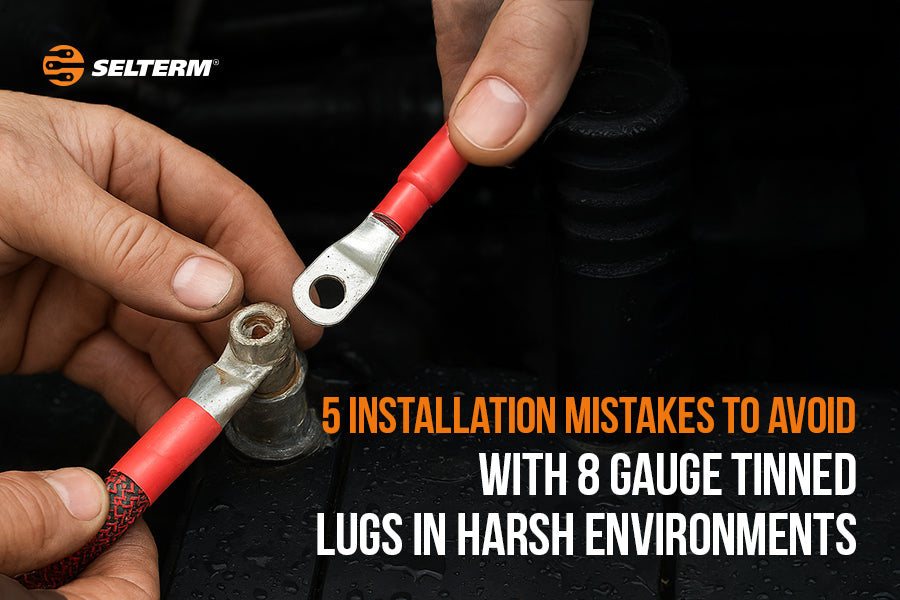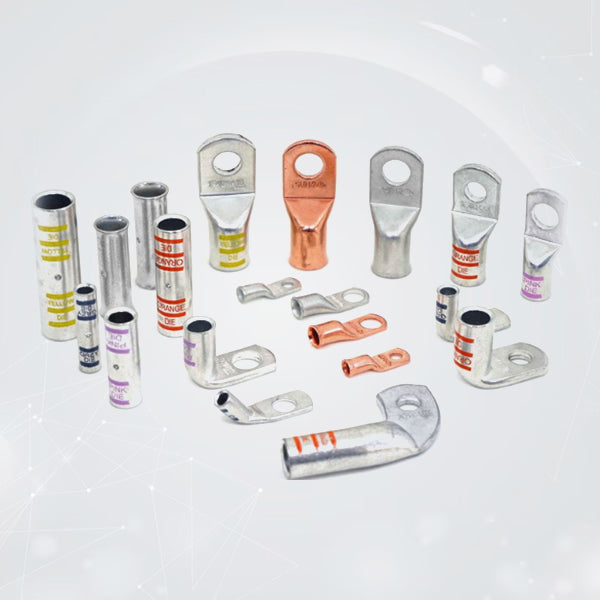
5 Installation Mistakes to Avoid With 8 Gauge Tinned Copper Lugs
In marine, industrial, or outdoor electrical applications, you don't get a second chance when making your connections. An error in your installation can lead to corrosion, voltage drops and even system failure. It is critical to use 8 AWG tinned lugs and correctly install them when working in a harsh environment. Tinned copper resists corrosion, and due to its high conductivity, will last a long time. Tinned copper is a preferred choice by professionals who can’t afford downtime.
But even the best 8 gauge tinned lug, also known as 8 AWG tinned lugs or 8 AWG tinned copper lugs, won’t save a project if it’s installed incorrectly. Below, we’ll go through the five most common mistakes installers make and how you can avoid them to keep your systems safe, stable, and efficient.
1. Choosing The Wrong Lug For The Wire Type
It might sound basic, but one of the most frequent errors is mismatching the lug size to the conductor. Using an undersized lug means the wire strands won’t fit properly, while an oversized lug can lead to a loose connection. Both scenarios create high resistance points, which generate heat and reduce performance.
Pro Tip: Always match your lug size exactly to your conductor. If you’re working with an 8 AWG cable, use 8 AWG tinned copper lugs designed for that gauge. Also, double-check that the lug’s stud size fits your terminal post.
2. Skipping Proper Wire Preparation
Even a high-quality 8 gauge tinned lug can fail if the wire isn’t prepped correctly. Stray wire strands, leftover insulation, or oxidized copper can all limit the contact area between conductor and lug, resulting in weak conductivity.
Pro Tip: Use a quality cable stripper to remove insulation without nicking the wire strands. Then, inspect the conductor for cleanliness. If it’s dull or discolored, a quick brush with a wire brush or abrasive pad can restore its shine before crimping.
3. Using The Wrong Crimping Tool
Not all crimpers are created equal. Using pliers, hammers, or an undersized crimper can cause an incomplete or uneven crimp. This reduces mechanical strength and increases the risk of pull-out or heat build-up under load.
Pro Tip: Invest in a ratcheting crimper or hydraulic crimping tool rated for 8 AWG. A proper crimp compresses the wire strands uniformly, creating a gas-tight connection that resists oxidation and vibration.
4. Ignoring Heat-Shrink Or Insulation
There are installers who think that because tinned copper has corrosion-resistant properties, they can avoid any other protection. Yes, tinning helps, but in a harsh environment, especially a marine one, connections will still be exposed to moisture, salt, and abrasion. The fact is, without insulation, your connection will remain susceptible.
Pro Tip: Always cover the crimped lug with adhesive-lined heat-shrink tubing. This will not only provide a barrier from moisture, but will also help lend mechanical support to the connection (via the heat shrink), thereby hopefully extending the service life. Consider additional layers of heat-shrink tubing in very exposed environments.
5. Over-Tightening Or Under-Tightening The Connection
The most flawless crimp will still be a complete failure if there is a poor mechanical connection at the terminal post. If you apply too much torque, you run the risk of deforming the lug barrel or damaging the stud threads. If you use too little torque, you may get arcing and heat buildup.
Pro Tip: The best approach is to use the torque specifications in the equipment manual. If there are no torque values specified, just snug it up firmly, and don't be stupidly forcing the nut or bolt to go any further past the resistance (be careful about stripping the threads). And in lieu of a mechanical torque specification, applying a torque wrench ensures you have generically consistent torque on multiple connections.
Why Tinned Lugs Are Worth The Upgrade
The reason 8 gauge tinned lugs are preferred in demanding environments comes down to their construction. Copper has very good conductivity, and the tin plating creates a barrier against oxidation and corrosion. This is important for conditions where humidity, salt, or temperature rise and fall rapidly may degrade bare copper quickly.
By using proper installation practices and the benefits of tinned copper, you are creating a connection that will last you a few years longer than one that wasn't well protected. The capital cost will be recouped on the avoided downtime, avoiding premature replacement, and protection of sensitive electrical equipment.
Final Thoughts
When working with portable power systems, marine wiring, or anything outdoors, every connection is important. You can eliminate a step or shortcut the installation process and your whole system could fail. Using the right components (e.g., 8 gauge tinned lugs) is your first line of defense and proper crimping, preparation, and protection can mean the difference between a short-lived fix and a long-term solution.
If you want connections that can handle tough environments without letting you down, it’s worth taking the extra time to do things right the first time.
Explore Selterm’s full range of 8 AWG tinned copper lugs for professional-grade performance that keeps your systems running strong, no matter the conditions.

